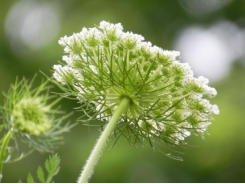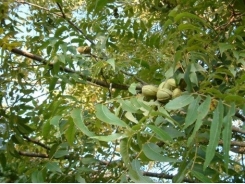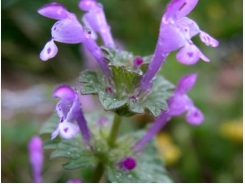How to Grow or Eradicate Horsetail Plant

Horsetail plants (Equisetum) have been around for thousands of years. The earliest species – found in coal beds dating to the Paleozoic Era – were the size of trees. Today, horsetail plants range in size from 4 inches to 3 feet, but they resemble the ancient plants in form and shape.
Horsetail plants are high in silica and have a gritty feel. Pioneers – and even campers today – used the plants to scour pots and pans.
Over 25 species of horsetail plants exist, including annual and perennial types. Some species have a vertical, grass-like form, while others are fern or fan-shaped. Horsetail reeds (Equisetum hyemale) are the species most commonly grown in landscapes. These tall, grass-like reeds have bright green, jointed stalks. Horsetail reeds, with their exotic, vertical forms, seem tropical, but they’re hardy in US Department of Agriculture plant hardiness zones 3 through 11.
Depending on the situation, horsetail plants can either be a modern looking landscape accent plant, or a disastrous invasive that is extremely difficult to get rid of. So we are covering it from both perspectives.
Horsetail reeds grow wild near bogs and wetlands throughout the world. In the home landscape, they make a striking statement when planted en masse near a pond or water feature. Keep in mind, though, that they spread quickly and can become invasive.
Thin them out annually or grow them in containers to keep them in bounds.
Plant horsetail reeds in partial sun and in moist soil that’s somewhat acidic and not overly rich. Water the plants frequently to keep the soil consistently moist. Chances are, you won’t encounter any disease or insect problems. Your biggest problem is likely to be controlling this plant.
Controlling Horsetail Plant
Horsetail plant, in all its forms, grows best in poor, sandy or gravelly soil. Some species need moisture, while others are quite drought tolerant. In the right landscaping situation, horsetail plants create an elegant, modern look. All too often, though, horsetails become invasive pests. They’re especially unwelcome in livestock pastures because they’re toxic to cattle and sheep.
If you’ve got unwanted horsetail plants, prepare yourself for a fight to get rid of them. Horsetail plants spread through both spores and underground rhizomes. The root system is wide-spreading and cut plants easily grow back. Smothering does not work either. The only organic method of control is to constantly cut every shoot back to ground level while simultaneously improving the soil to make it drier, richer and more alkaline. It may take several seasons to eradicate it this way.
The other option is a systematic herbicide. Spray the area with an herbicide labeled for treating horsetail plants, such as one containing triclopyr. Follow the package directions carefully and apply the herbicide on a windless day to avoid drift and herbicide injury to desirable plants. Once the plants have died back, improve the soil. Amend the soil with compost or manure to improve its texture, fertility and drainage. Horsetail plants prefer poor growing conditions and may not grow in fertile soil. Plant the area thickly with grass or perennials or lay down landscaping fabric and mulch the area.
Tools

Phối trộn thức ăn chăn nuôi

Pha dung dịch thủy canh

Định mức cho tôm ăn

Phối trộn phân bón NPK

Xác định tỷ lệ tôm sống

Chuyển đổi đơn vị phân bón

Xác định công suất sục khí

Chuyển đổi đơn vị tôm

Tính diện tích nhà kính

Tính thể tích ao




 How to Grow Torenia
How to Grow Torenia  Common Diseases of Pecan Trees
Common Diseases of Pecan Trees